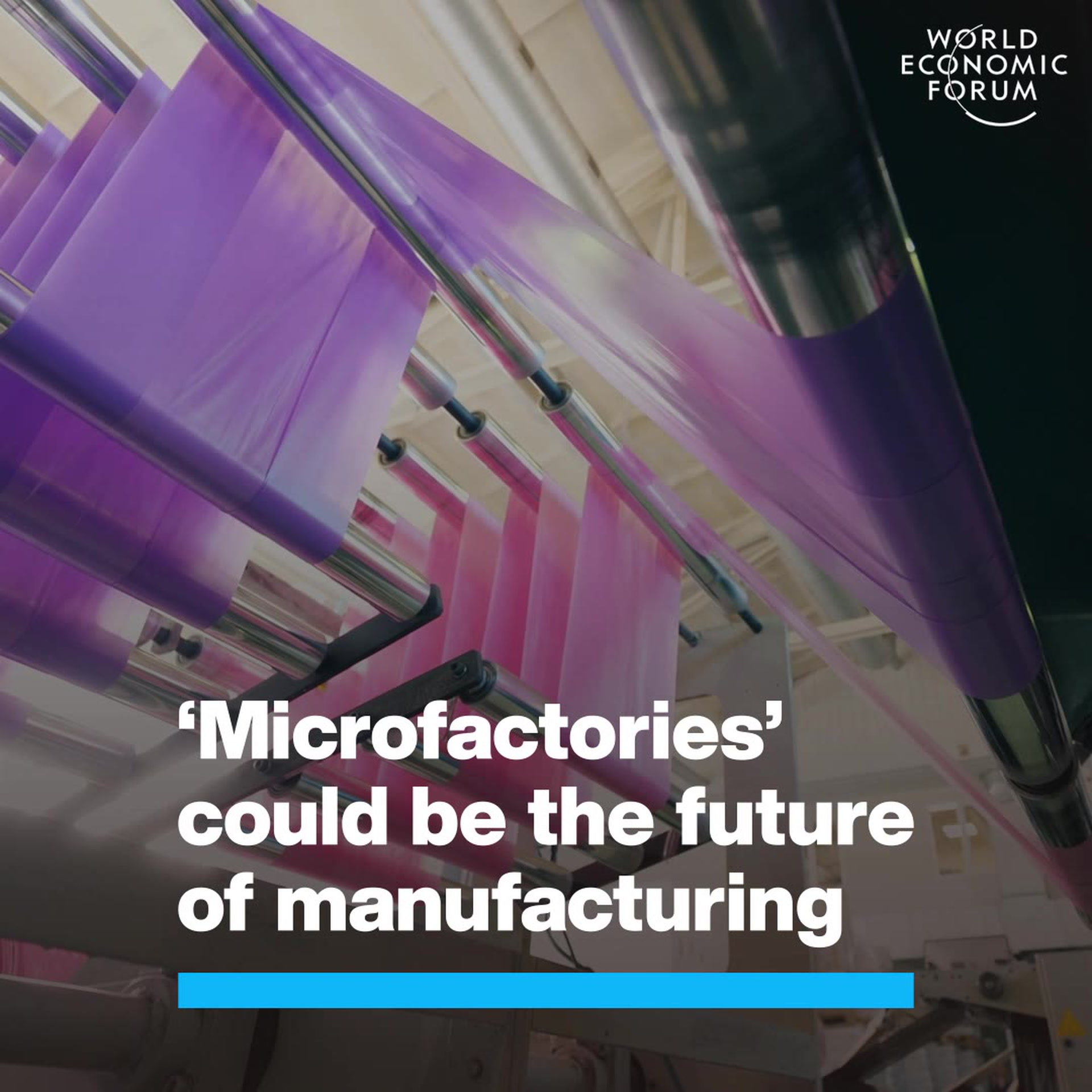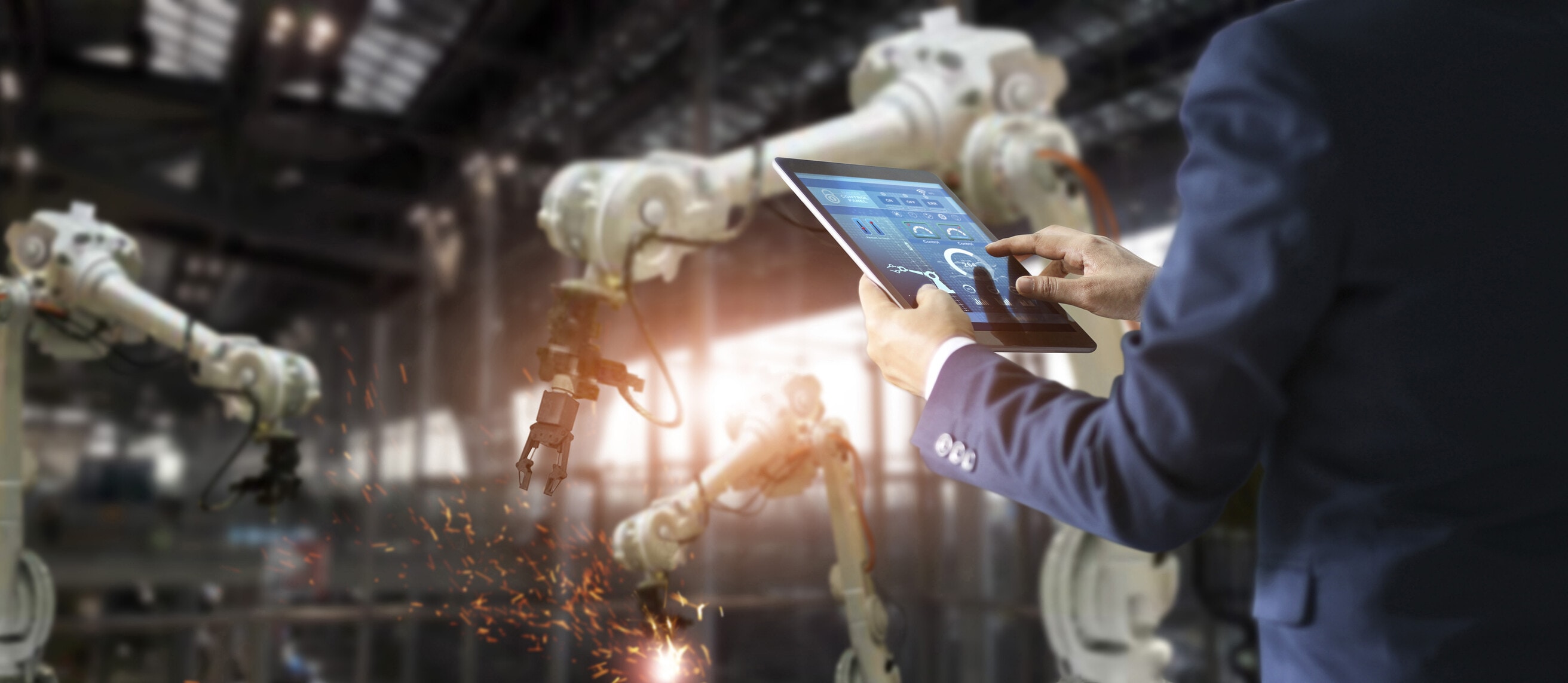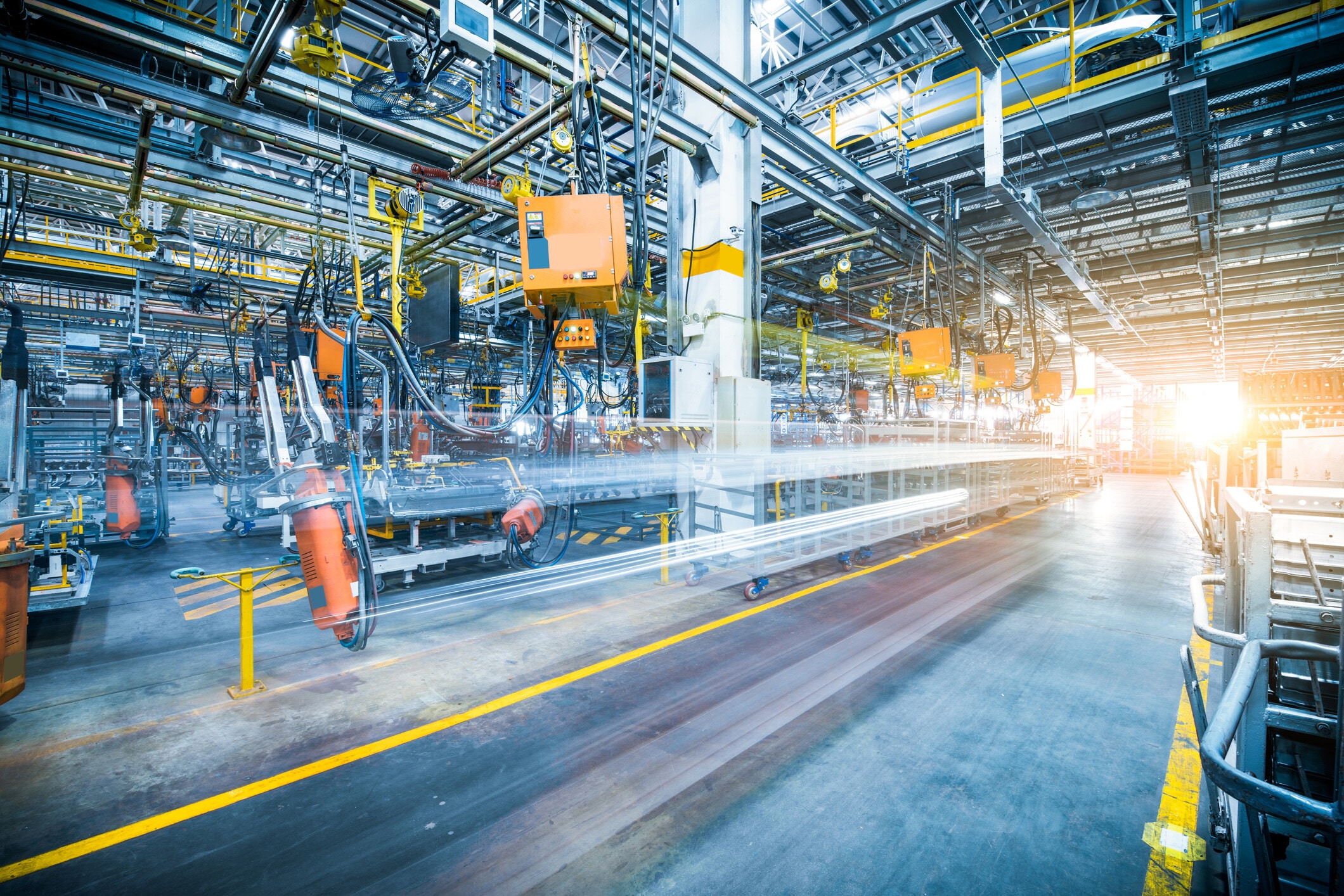The way we make things is about to fundamentally change

The sun will soon set on the age of shipping heavy parts and products around the world Image: REUTERS/Darrin Zammit Lupi

Get involved with our crowdsourced digital platform to deliver impact at scale
Stay up to date:
Advanced Manufacturing
“Tooling” - the process of designing and engineering the tools that are necessary to manufacture parts - was the essential technology behind the early industrial revolution. It allowed manufactured goods to go from humans to machines and powered the production of complex mechanical inventions like the steam engine.
With new economies of scale driven by machines, raw materials travelled from developing nations to industrial ones, and cost-effective goods flowed back to other nations across the world. Our modern era of global trade and tariffs began.
Today, we make raw materials and ship them around the world to factories that make parts. Those parts are shipped to other factories that assemble them into product components, which are then shipped all over the world to more factories that make ever more complex final products. This process is the legacy of the first industrial revolution.
Tens of trillions of dollars in capital is travelling at any given time on boats and planes, for weeks on end, across the oceans. Almost every product has a part or component that has sluggishly moved through warehouses and customs facilities where bureaucrats have charged tariffs or VAT.
This antiquated process is slowly starting to change. We are at the beginning of a new S-curve, one that will forever advance the way we make and trade goods enabling a new era of productivity. A new class of high-speed industrial 3D printers from companies like Carbon, HP and my own, Desktop Metal, which are closer to a printing press than a printer, are enabling this change and quickly becoming an integral part of the Fourth Industrial Revolution.
These new machines are capable of printing complex parts at a lower cost than traditional techniques like casting and will break even at 100,000 parts or plastic parts. The costs for low to mid-range volumes are almost equivalent to those associated with injection molding.
As this technology matures, the points at which the process breaks even will improve, enabling an era of borderless production. In this new model, only raw materials are shipped and factories around the world digitally print parts as they need them for the final assembly of the products they make. There is no tooling and no waste of raw materials. Parts are no longer stuck on ships and planes, instead, they travel as digital files to the locations where they need to be printed for the final assembly.
The benefits of a borderless supply chain aren’t the only factor driving the adoption of these new printing presses. There are three additional motivations, all of which will lead to dramatically superior products:
1. Generative design
These new printing technologies make more complex parts possible. In 2015, a new class of software started to appear: generative tools that let the mechanical engineer tell the computer where a part should exist, outlines the external forces acting upon it and identifies the areas to avoid. Once the high-level requirements are entered, a high-powered, AI-driven cloud computer cluster designs the part in a multi-physics context. This flexible, AI-driven approach to design is known as generative design and produces fully optimized parts that are often 50% lighter than their conventional counterparts without sacrificing performance. These super complex shapes resemble nature and it is only possible to manufacture them through 3D printing. Thanks to these new, high-speed presses it's finally cost-effective to produce these previously impossible-to-create parts.
2. 'Reductive decontenting'
“Reductive decontenting” is the process in which the reduction of weight of many components through the use of new manufacturing technology results in further reduction of weight of total active components within a product. For example, if you reduce the weight of a vehicle, the brakes, shocks and engine can be smaller. Almost everything benefits when you use generative design to drastically make a product lighter and you can then take advantage of the lower weight for reductive decontenting. There are fewer materials to purchase, the end product is lighter so it takes less energy to move it, and performance increases as you are able to accelerate and brake faster.
3. Assemblies consolidation
Assemblies consolidation is an engineering technique enabled by 3D printing and which requires sophisticated design skills. It relies on a design process where you combine many parts in a product into a single, solid multi-functional part. While this is not a new technology, it is only possible to manufacture the end part with 3D printing because the result of this process is a super complex structure and only 3D printing gives you complete shape flexibility to print macrostructures that become multifunctional.
This process has a major deflationary effect on a company’s supply chain and can dramatically reduce costs in major companies. In fact, companies like Optisys have used these techniques to reduce the components in a Ka band antenna from 100 to 1, while General Electric has effectively used this process to take the housing of a turboprop engine from 855 parts and reduce it to fewer than 20 multifunctional parts. While the collection and evaluation of data during the validation process for entirely new parts is more involved, it comes with dramatic reductions in the cost of the supply chain because you no longer need a staff to manage, certify, validate and qualify those 855 parts.
A new manufacturing S-curve
This revolution is very similar to what happened with digital photography and industrial printing, where offset presses have been disrupted in the past decade by digital presses. Once a digitally fabricated part reaches cost parity with conventional processes there are other economic forces that promote adoption. There is no need for inventory (parts on demand), tooling or shipping.

With these new digital fabrication techniques in place, we will be able to democratize production. 3D printing makes it possible to produce geometrically complex designs for free and liberates designers from the manufacturing process, allowing them to create the optimal shape. SMEs will be able to produce goods around the world with equal or greater complexity than their global counterparts.
A small company in Ghana or Buenos Aires will be able to print parts with the same quality as a major company in Connecticut. By eliminating tooling and allowing one part to cost as much as 100,000 parts, products can be localized, and designs changed faster. The best designs will be sent around the world digitally and printed on demand circumventing the global tariff and VAT systems that have taxed production since the last industrial revolution.
The world manufactures $12 trillion in goods every year, so it will take many decades to modernize the world’s manufacturing capacity to take full advantage of this technology. One thing is certain, at the end of this century, as we look back on how the Fourth Industrial Revolution changed things, we will see mass, borderless production via 3D printing presses as one of the crucial, enabling technologies that drove productivity, economic growth and prosperity.
This article was prompted by discussions at Davos linked to the World Economic Forum's Future of Production work.
Don't miss any update on this topic
Create a free account and access your personalized content collection with our latest publications and analyses.
License and Republishing
World Economic Forum articles may be republished in accordance with the Creative Commons Attribution-NonCommercial-NoDerivatives 4.0 International Public License, and in accordance with our Terms of Use.
The views expressed in this article are those of the author alone and not the World Economic Forum.
The Agenda Weekly
A weekly update of the most important issues driving the global agenda
You can unsubscribe at any time using the link in our emails. For more details, review our privacy policy.
More on Advanced ManufacturingSee all
Stephanie Wright, Memia Fendri and Kyle Winters
February 13, 2024
Maya Ben Dror and Lena McKnight
January 31, 2024
Dr. Matthew Putman
January 17, 2024
Kyriakos Triantafyllidis and Andreas Hauser
January 16, 2024







